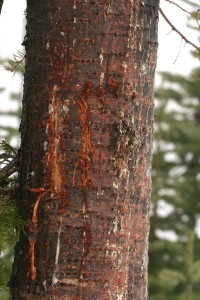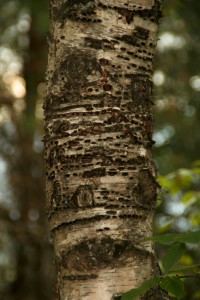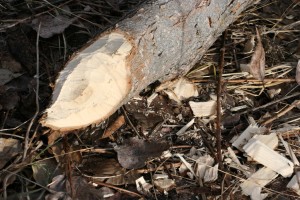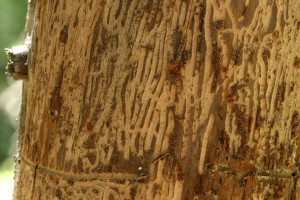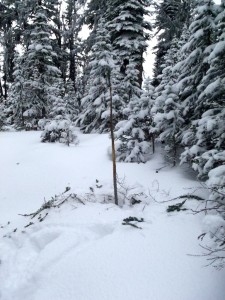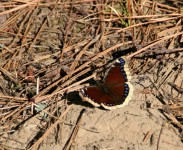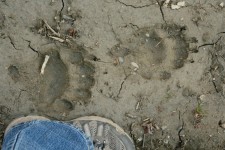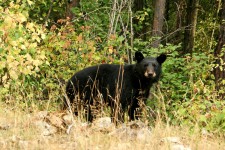Wandering through the woods, I found a tree with claw marks scratched in the bark at eye-level and black hair stuck to once oozing sap. The culprit–most likely a black bear sometime this summer.
After I found the claw marks, I started to look for more animal sign on trees. On the same tree right next to the claw marks, were lines of square holes drilled into the bark–a sapsucker. True to their name, sapsuckers drill the holes to allow sap to ooze out so they can lap it up.
Sap is also the motive for black bears to peel the bark off the lower portion of trees, sometimes even girdling the tree. On the same wander in the woods, almost every larch tree for a few hundred yards had a section of bark removed from the base. Black bears go after the sweet tasting sap in spring and early summer and the sign of their destruction lasts for the life of the tree.
Likewise, one single climb up an aspen tree by a black bear may be seen for the entire life of the tree since the claw marks etched into the soft, smooth bark can become scabbed over.
Aspen trees may also have rough, blackened trucks to the height an elk can reach. Elk like to gnaw on the aspen trees in winter, which causes the tree to scab over.
Gnawing on trees, especially during the winter, is a habit on many animals and key to their survival. Porcupines gnaw large patches of bark off tree trunks and eat the bark off twigs. Their gnawings have neat edges, irregular outlines and numerous small toothmarks, which help distinguish them from elk or moose gnawings.
Closer to the ground, snowshoe hares will feed on the bark of trees. However, when they feed on the cambium, they gnaw far beyond the bark into the woody center unlike other animals.
Then there is the champion of gnawing–the beaver–who gnaws through an entire tree trunk to fell a tree. Beavers need to constantly gnaw on trees to wear down their continuously growing teeth.
Instead of gnawing, woodpeckers drill into trees to find insects to eat or to excavate a nest cavity. Some of these sought after insects leave their own sign. Ever notice the insect trails on the inside of bark or the outer edge of wood when peeling the bark off a tree for firewood? Birds will debark a section of tree to access these insects, such as bark beetles, and will expose the insect’s trails.
Some tree signs aren’t related to food. A medium-sized sapling with its bark shredded and small limbs broken reveals the presence of an elk or deer rubbing or thrashing its antlers on the tree during the rut.
While not as obvious as elk or deer, bears will rub against a tree to remove their winter’s coat or unwanted parasites, often leaving behind hairs in sap or on bark.
More animals than mentioned here let their presence be known, whether purposely or not, on sign posts in the forest. We even leave our sign on trees, in the form of trail blazes, so that we can find our way through the forest.

